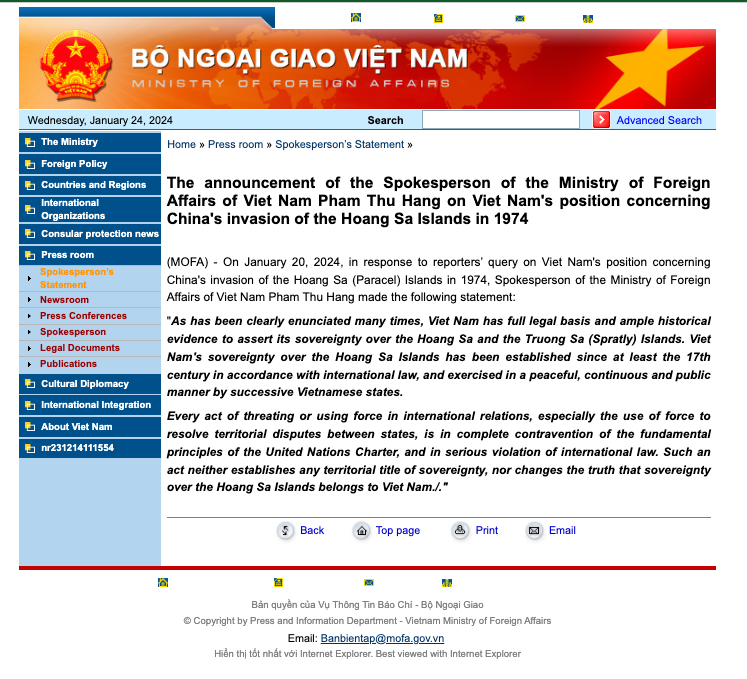Participants in the South China Sea
We are documenting the names and titles of relevant, key participants in the actions and publicity around the South China Sea, and more broadly in the countries in the area. Not all of these countries have a claim to reefs, but they all are relevant to the space. We are also documenting relevant relationships between countries in the region.
A few relevant nations are missing from the list, because their leadership is absent from our open source research (e.g., Japan, Malaysia and Brunei). This list is updated often.
A few relevant nations are missing from the list, because their leadership is absent from our open source research (e.g., Japan, Malaysia and Brunei). This list is updated often.
China
President, Xi Jinping
Head of Navy (former): Admiral Dong Jun (now Chinese Defense Minister)
Commander, People's Liberation Army Rocket Force (former): Wei Fenghe
Head of People's Liberation Army Rocket Corps (former): Li Yuchao.
Foreign Minister & State Councilor (former): Qin Gang
Chinese Defence Minister and State Councilor, Central Military Commission member (former): Li Shangfu
Wei Dongxu, a Beijing-based military expert; Cao Weidong, a military expert and former researcher at China's PLA Naval Military Studies Research Institute.
Chen Xiangmiao, director of the World Navy Research Center at the National Institute for South China Sea Studies
Zhu Feng, a South China Sea specialist at Nanjing University
Song Zhongping, Military expert
Wu Xinbo, a professor at China's Fudan University
Wu Shicun, president of the National Institute for South China Sea Studies
Shi Yinhong, professor of international relations at Renmin University of China
Li Dexia, Associate Professor with the School of Journalism and Communication at Xiamen University, China.
Xu Liping, director of the Center for Southeast Asian Studies at the Chinese Academy of Social Sciences
Hu Xin, Assistant Researcher, China South China Sea Research Institute
Chinese Foreign Ministry spokesperson Lin Jian
China's Ministry of Natural Resources published a new 10-dash line in August 28, 2023 that publicizes their own territorial claims.
China's maritime militia fleet are known for their blue-hulled ships, and are actively operating in the South China Sea, including around the Second Thomas Shoal as recently as December 10, 2023. This fleet is separate from China's Navy and Coast Guard, and are known to be 'patriotic fisherman' by the Chinese Government.
China supports a July 12, 2016 concept (described here) called Nan Hai Zhu Dao, Nanhai Zhudao, or the Four Sha/sands, to explain the logic of their sovereignty claims of the 10-dash line. Here are the four shas:
- Dongsha Qundao (Dongsha islands) which may also include Taiwan
- Xisha Qundao (Xisha or Paracel Islands)
- Zhongsha Qundao (Zhongsha Islands southeast of the Paracel Islands)
- Nansha Qundao (the Nansha or Spratly Islands).
President, Xi Jinping
- Foreign Minister, Wang Yi, member of the Political Bureau of the Communist Party of China Central Committee
- Chinese Defence Minister, Admiral Dong Jun Source
- Political commissar of the Southern Theater Command, and Chinese Foreign Ministry spokesperson, Wang Wenquan
- Head of Navy, Commanding General, Hu Zhongming
- Head of the People's Liberation Army, General Liu Zhenli
- Commander, People's Liberation Army Rocket Force, General Wang Houbin
- Political Commissar, PLA Rocket Force, General Xu Xisheng
- Chinese State Councilor, Yang Jiechi
- Chinese Ambassador to Philippines, Huang Xilian
- Senior Colonel Tian Junli, Spokesman at the PLA Southern Theater Command (as of 03/23/2023)
- Chinese Defense Ministry Spokesman, Zhang Xiaogang (as of November 2023)
- Chinese foreign Ministry Spokesman, Wang Wenbin (different spelling, need to confirm)
- Chinese Foreign Ministry Spokesperson, Mao Ning
- Chinese Defence Ministry Spokesman Senior Colonel Wu Qian
- Yang Tao, director-general of the Department of North American and Oceanian Affairs of the China's Foreign Ministry
- Chinese State Councilor and Minister of Public Security Wang Xiaohong (War on Drugs)
- Secretary of the Shanghai Municipal Committee of the Communist Party of China, Chen Jining
Head of Navy (former): Admiral Dong Jun (now Chinese Defense Minister)
Commander, People's Liberation Army Rocket Force (former): Wei Fenghe
Head of People's Liberation Army Rocket Corps (former): Li Yuchao.
Foreign Minister & State Councilor (former): Qin Gang
Chinese Defence Minister and State Councilor, Central Military Commission member (former): Li Shangfu
Wei Dongxu, a Beijing-based military expert; Cao Weidong, a military expert and former researcher at China's PLA Naval Military Studies Research Institute.
Chen Xiangmiao, director of the World Navy Research Center at the National Institute for South China Sea Studies
Zhu Feng, a South China Sea specialist at Nanjing University
Song Zhongping, Military expert
Wu Xinbo, a professor at China's Fudan University
Wu Shicun, president of the National Institute for South China Sea Studies
Shi Yinhong, professor of international relations at Renmin University of China
Li Dexia, Associate Professor with the School of Journalism and Communication at Xiamen University, China.
Xu Liping, director of the Center for Southeast Asian Studies at the Chinese Academy of Social Sciences
Hu Xin, Assistant Researcher, China South China Sea Research Institute
Chinese Foreign Ministry spokesperson Lin Jian
China's Ministry of Natural Resources published a new 10-dash line in August 28, 2023 that publicizes their own territorial claims.
China's maritime militia fleet are known for their blue-hulled ships, and are actively operating in the South China Sea, including around the Second Thomas Shoal as recently as December 10, 2023. This fleet is separate from China's Navy and Coast Guard, and are known to be 'patriotic fisherman' by the Chinese Government.
China supports a July 12, 2016 concept (described here) called Nan Hai Zhu Dao, Nanhai Zhudao, or the Four Sha/sands, to explain the logic of their sovereignty claims of the 10-dash line. Here are the four shas:
- Dongsha Qundao (Dongsha islands) which may also include Taiwan
- Xisha Qundao (Xisha or Paracel Islands)
- Zhongsha Qundao (Zhongsha Islands southeast of the Paracel Islands)
- Nansha Qundao (the Nansha or Spratly Islands).
